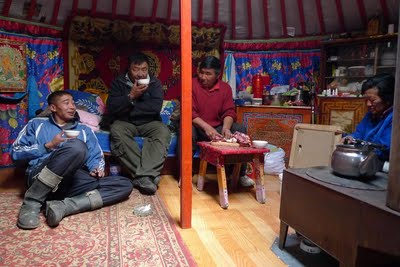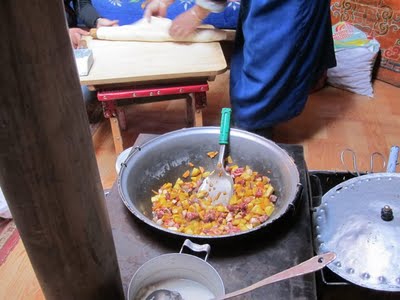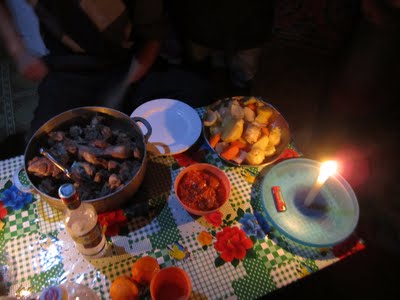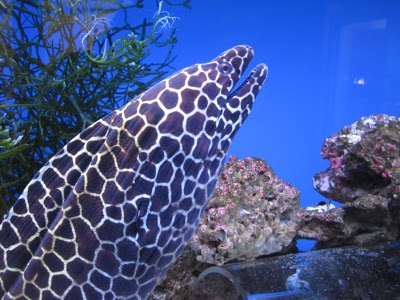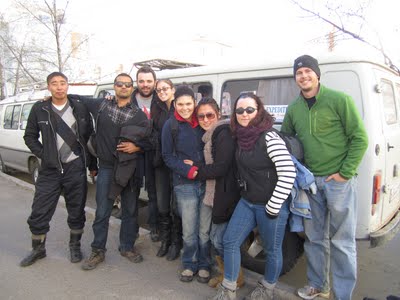Our first day on the road began at 9am as we pulled out of Ulaan Baator and hit the open road. And by “open road” I mean, a very, wide-open, dirt road.
I couldn’t believe that our driver Jackie knew where to go. There were no directional signs of any kind and yet he knew exactly which dirt track to take.
Very soon after getting out of the city we hit an Ovoo (the first of many). An Ovoo is a mount of rocks, often crested with blue silk scarves. These cairns are religious sites used to worship different aspects of the landscape.
When encountering an Ovoo, its customary to circle the pile three times in a clockwise direction and add stones or offerings to the mound to encourage a safe journey.
Our drive that day would cover over 300km, on bumpy, jarring, dirt roads, giving us plenty of time to get to know our guide better.
Deegii was a star student in high school and was even interviewed on the local news for finishing school never having received a test score lower than 93%. She graduated University at age 19 and then joined the army for several years where she became a highly skilled equestrian and archer.
She now works for the National Arts Council and as a tour guide on her free time. I was struck by how fiercely proud she was to be Mongolian and by the fact that even though she had an advanced education, she wanted to remain in Mongolia and help preserve the country’s traditional culture.
After hours in the van, we saw the rounded white top of a Ger in the distance. This was our lunch stop.
Gers in the Gobi function as everything from restaurants to hotels to repair shops. Mongolians are unbelievably hospitable and travelers can stop at any Ger for a rest, a meal or help without question.
Inside the Ger we met our hosts, an older couple with three kids and eight grandkids. They quickly got busy making our lunch.
Meat was chopped off the bones and cubed (by the man of the house).
Sliced potatoes, carrots and spices were sauteed in a giant bowl on the Ger’s central hearth.
The meat was added and cooked until brown.
A ball of dough was rolled into a huge, thick circle, doubled over several times and then cut into strings.
And just like that there were homemade noodles.
The noodles and some broth were added to the bowl and left to simmer.
The interior of the Ger was warm and colorful. A TV perched in the corner ran off a solar panel powered battery pack – a very common practice for nomads.
Mongolian nomads move four times per year, following their herds and the seasons. It takes only about 30 minutes to break down a Ger, but over 2 hours to set it up again.
By the time the soup was ready, we were ravenous! Maybe it was being hungry or being cold, but at the time I couldn’t imagine eating anything other than that delicious soup.


